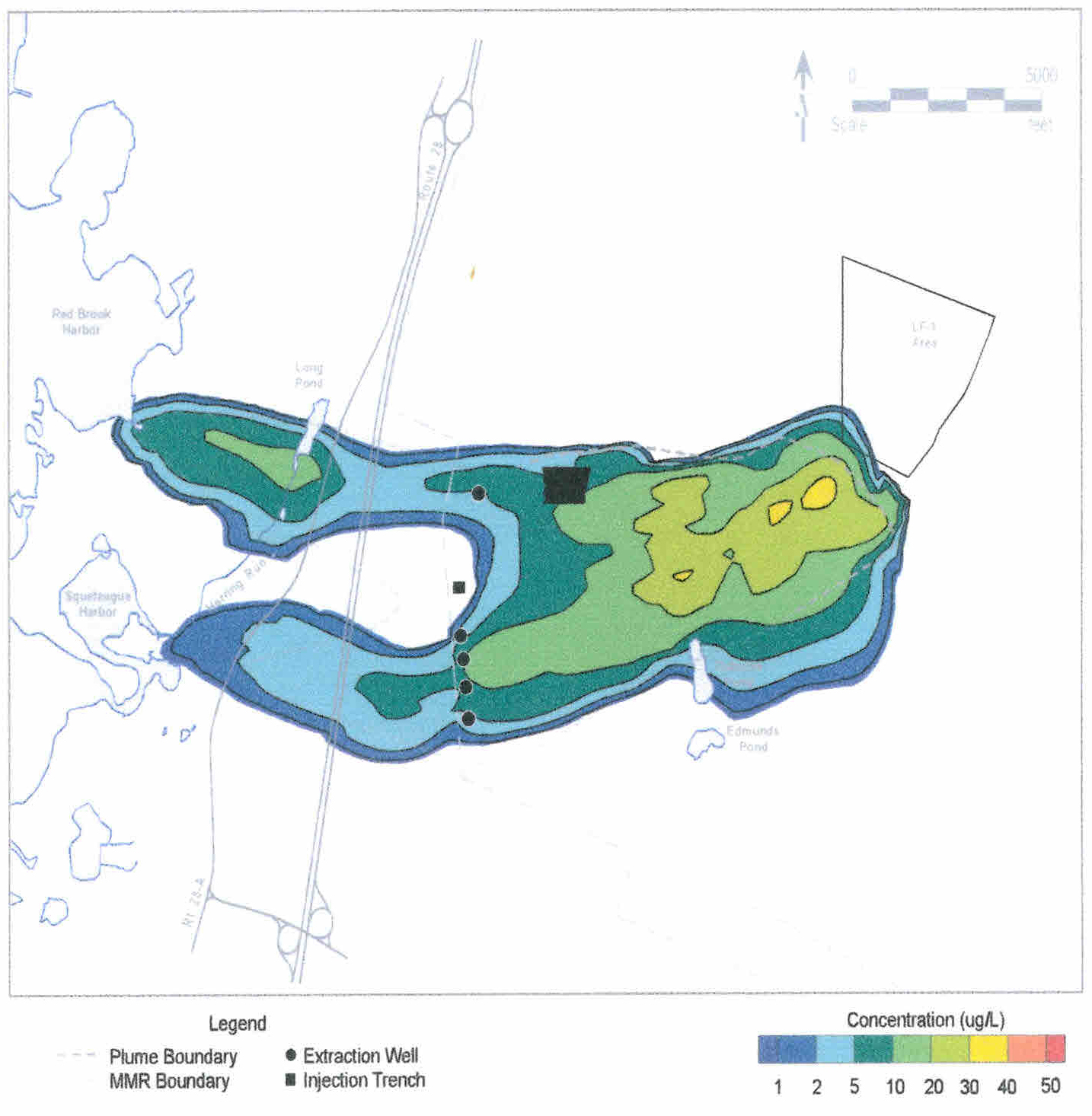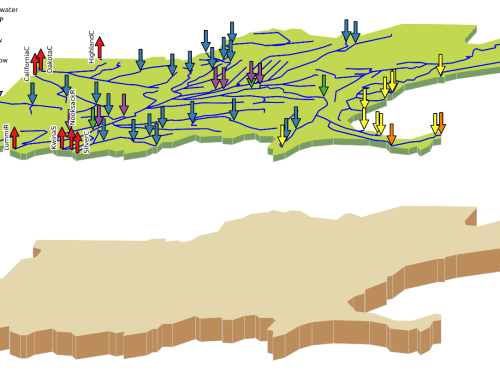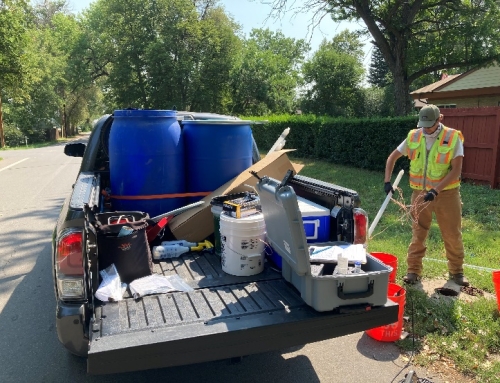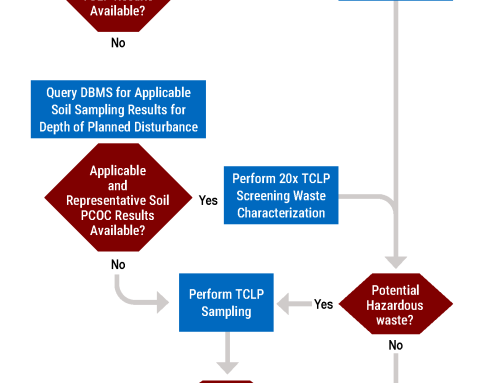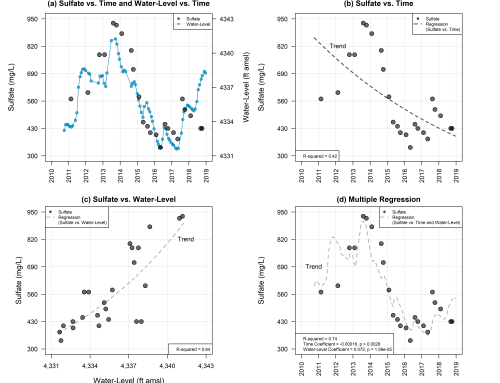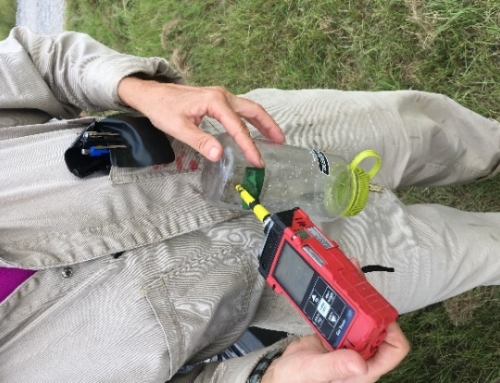SSP&A developed and applied a 3D groundwater flow and contaminant transport model for the OTIS/MMR as part of remediation efforts at the site.
SSP&A was initially retained by the U.S. Air Force through Jacobs Engineering to evaluate existing data and then conduct groundwater flow, fate-and-transport (F&T) modeling and particle tracking for the Landfill-1 (LF-1) plume at the Massachusetts Military Reservation (MMR) in Barnstable County. The 60-acre landfill was capped with over 5,000,000 square feet of material in October 1995, since which time groundwater monitoring showed its effectiveness as indicated by decreased levels of contaminants in wells adjacent to and down-gradient of the landfill. The selected remedial action involved five extraction wells, one infiltration gallery, and one infiltration trench, combined with Monitored Natural Attenuation (MNA). The objective of the project was to design a pump-and-treat (P&T) remedy that exhibited minimal effects on nearby sensitive surface water bodies. Criteria were established for the remediation system that included limited drawdown in the surface water bodies, and limited inflow of treated groundwater to the surface water bodies. The F&T model developed by SSP&A was later used to evaluate the drawdown and surface water effects of various groundwater P&T operating scenarios under consideration for the site. SSP&A completed the interim and final remedy designs based on numerous particle-tracking analyses (utilizing PATH-3D, developed by SSP&A and MODPATH, developed by the USGS) to optimize pumping rates required for hydraulic containment and capture of the plume; support transport simulations for evaluating the role MNA might play in the final remedy; and to assess the risk to down-gradient public supply wells under various remedial designs. SSP&A also participated in public meetings to present modeling results.
SSP&A was subsequently retained to undertake wide-ranging data analysis, reporting, and remedy evaluation and optimization tasks.
Following the initial modeling work, SSP&A was retained to design performance monitoring plans for several groundwater P&T remedies that were in operation or under construction under CERCLA. The monitoring and performance evaluation plans included scope and methods for evaluating the location, migration, and impacts of CVOCs and other constituents discharging to freshwater kettle ponds; and techniques for interpreting the hydraulic containment and capture developed by the P&T remedies. Related activities included contributing to treatment plant design assessments, recommending O&M improvements, and co-authoring quarterly and annual reports. SSP&A also designed and oversaw numerous data collection activities including sensitive impeller and heat-pulse flow profiling of long-screened extraction wells to identify contaminant inflow locations and estimate aquifer parameters; infiltration studies at the CS-10 infiltration gallery to predict the timing and extent of hydraulic mounding; evaluation of hydraulic data associated with in-ground recirculation well systems; and instrumentation of monitoring wells with multi-parameter transducers to obtain piece-wise continuous data for remedy analysis. As part of this work, SSP&A developed and published novel data mapping techniques to be used as a supplement to numerical groundwater flow and contaminant transport modeling. Technical findings from this work were presented to the Air Force Center for Environmental Excellence (AFCEE) and at multiple stakeholder meetings.

